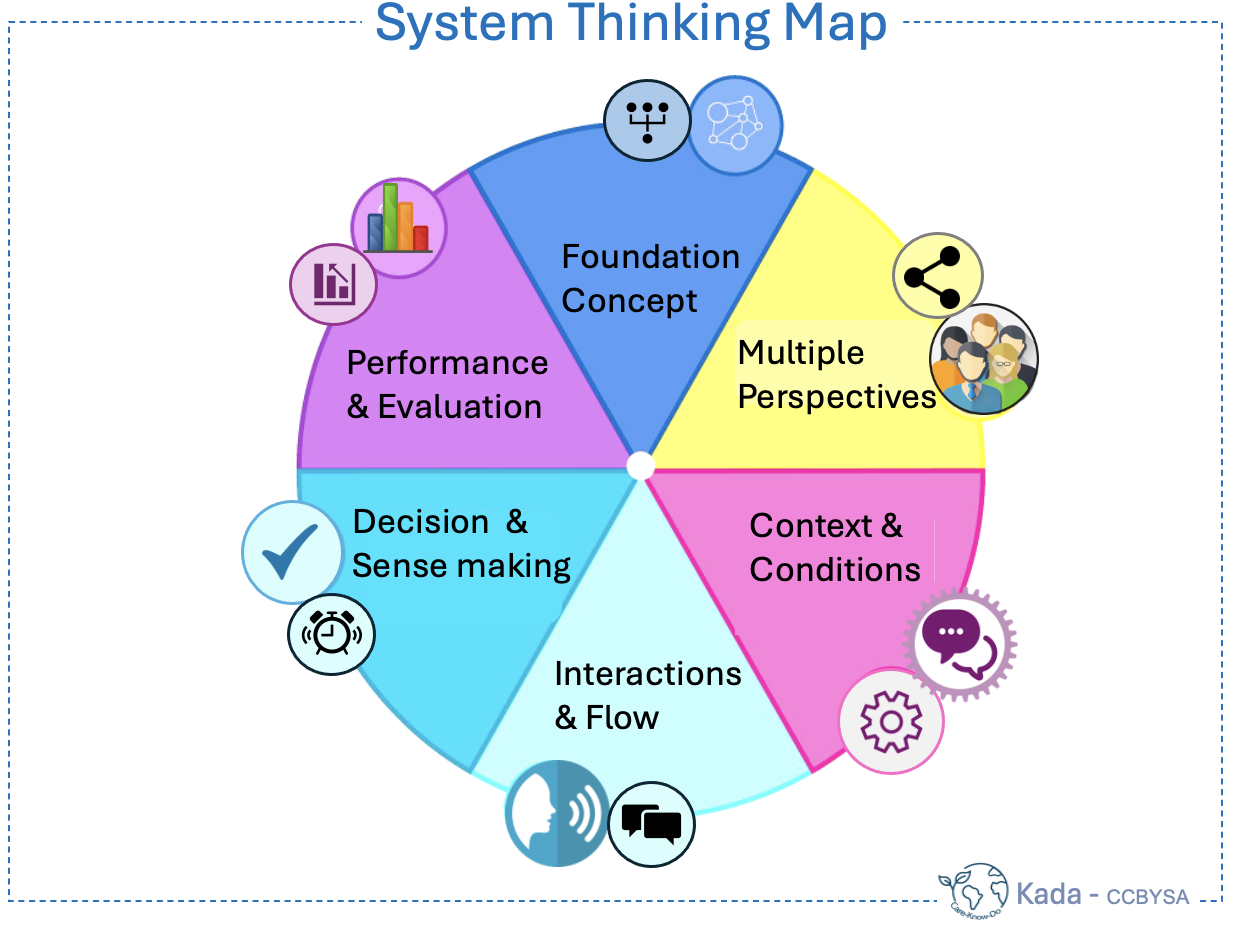System Thinking Mapping is a knowledge cartography technique whose popularity increased due to Jay W. Forrester’s work in the 1950s. This technique is used to visually represent and analyse complex systems, relationships, and interactions. System Thinking Mapping supports learners to conceptualize and explore the holistic view of interconnected systems. It is useful for understanding complex issues and developing strategic solutions.

How can we create a System Thinking Map?
- Define the scope and boundaries of the system.
- Identify all relevant elements and their relationships.
- Map out feedback loops and causal connections.
- Highlight reinforcing and balancing processes.
- Consider how changes in one part affect the whole.
- Use the map for problem-solving and predicting outcomes.
System Thinking Maps can help students to approach problems with a comprehensive perspective.
The application of System Thinking Maps is critical in environmental studies, business, and social sciences.
Our studies about System Thinking Maps using AI map application indicate that one of the main advantages is the facilitation of complex systems analysis and foresight planning.